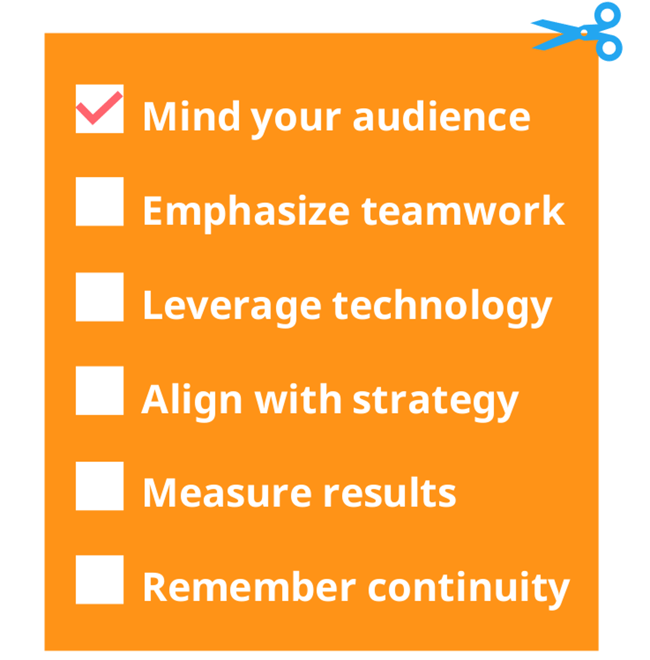What should you know when organizing innovation training?
Developing the skills, knowledge and capabilities of employees is on the to-do list of almost all ambitious leaders. However, regardless of its importance, the task might often fall into oblivion when dealing with urgent daily matters and trying to meet demanding financial targets.
Thus, we at Viima thought we could share our thoughts on innovation training to help leaders getting in the right mindset for employee development. In this post, we will at first discuss what innovation training is, then reflect why it matters and finally give advice in how to succeed in organizing one..jpg?width=650&name=creative%20supplies%20(1).jpg)
Table of contents
Employee training means transmitting information to the personnel in order to teach them knowledge, skills and attitudes needed in their daily jobs. Innovation, in turn, is a new idea turned into a value-generating reality. So, simply put innovation training signifies educating employees about making innovation happen.
Innovation training covers both enhancing the creative potential of individuals and developing their understanding of the organization’s innovation practices. This double-objective states that participants should adopt new skills for innovation while they also learn how to apply them in everyday work. Although these goals might sound high-flying, the underlying aim is to generate enthusiasm around the topic and boost people’s imagination to come up with unforeseen ideas and to see them through to implementation.
The techniques and methods of execution of innovation training vary. It can be carried out as an online course or through in person meetings. Training can be conducted by outside consultants, own experts or even in form of mentoring. There are different tools available, too. Some of them, like slideshows and lectures, are more traditional while others, such as hackathons and idea competitions, have only recently risen in popularity. Also, the duration and frequency of training sessions can be freely scheduled from one-day events to recurring shorter gatherings.
The needs of the organization and the resources allocated for employee development naturally set some conditions for the training sessions and whether they should be customized or scalable. Is the education directed to the whole organization, a specialized team or a single individual? Does the company need a general creativity boost or does it have a certain purpose, like improving collaborative strategy processes or open innovation, in mind?
Quite often innovation is overshadowed by other training topics, such as customer service or sustainability, which is a shame since being innovative would benefit in these matters as well as support improvements in other important areas. Innovation training namely promotes curiosity and makes people challenge their assumptions. It simultaneously helps people view problems as opportunities and defines both practices and common language to seize them..jpg?width=650&name=creative%20person%20(1).jpg)
Why is innovation training important?
As mentioned, the effects of innovation training on creativity are positive. That might be surprising because the general misunderstanding is that creativity cannot be learned – it is however not true as only a small part of our genes explains our creative capabilities. This impact is potentially the most significant single benefit as creativity is considered as one of the most critical skills for the future.
It is often stated that employees are the most valuable resource of a company. Thus, it is worth supporting them to reach their maximal potential, for example in the field of innovation. Yet, not everybody should have the same role: some people are good at generating ideas, others at developing them and some shine in execution.
The challenge is to take these personal differences into account in the training and form a functioning whole. Fostering and developing talents makes employees feel more empowered and engaged which in turn increases productivity. In addition, a spark to learn more can boost career advancement. Over time, innovation training produces cultural benefits: people understand strategy better, feel more connected to leaders and contribute to an environment that supports diversity and dialogue.
In today’s rapidly evolving business environment, organizations must be ready to react to changes in an agile way. Capacity to generate ideas effortlessly can turn out to be a competitive advantage in these circumstances. If the employees are capable and willing to think outside the box and the organization has built an effective way to utilize this potential, it has higher changes of success. Bottom-line impact is likely when efficiency improves along with the ambition of coming up with better ways of doing things.
However, innovation training does not come without problems. It is important to anticipate and prevent them to enjoy all the benefits training can offer.
Firstly, it might be hard to get employees’ buy-in to the program if its rationale is not clear and convincing and if management commitment is lacking.
Secondly, people might find participating in innovation pointless if it is not properly incentivized.
Thirdly, changing organizational culture to support innovation tends to be challenging. The company must to get rid of attitudes like “My way is the only one correct way of doing things.”, “Everything must be logical and rational.”, “Mistakes and failures are mortal.” and “I’m not creative.”.
Innovation tools are useful for harvesting the advantages of innovation training as the results of increased creativity and engagement need a clear place where they can be shared, stored and monitored. Indeed, this system should support also other functions than brainstorming since it is only a small part of journey of ideas into concrete innovations. It should allow transparent communication and support teamwork, too. Finally, it is crucial that the tool is user-friendly and intuitive so that participants feel at ease with it. You can start enjoying the fruits of your innovation training with Viima for free.
How to succeed in innovation training?
Like in all communication, adapting the content of the innovation training for the audience in question is the number one key to success. The program should be relevant, useful and interesting for the participants. Employees have different tasks, expertise and ambitions and their performance requirements related to innovation are not similar. It must be clearly thought out whether it is better for your organization to train everybody on a general level or leaders more profoundly so that they can then educate others and contribute to a culture of innovation.
Even if innovation training strives to develop individual creative capabilities of the audience, it needs to emphasize the importance of teamwork as well. Practically all great innovations were born by refining raw ideas collaboratively, not in solitude – some even say that innovation is product of culture rather than individuals. Thus, training should be interactive in nature as well as promote values like diversity and trust. Clarify that your organization values employees’ ideas and values courage of expressing their opinions, even when they do not think alike.
Developing your employee’s skills in innovation simultaneously creates a pressure to handle a growing number of ideas effectively, all the way from initial collection to implementation. So, innovation training should not only improve creative thinking but also teach the participants to use the technologies intended to support creative work. This is of course easier if the tools are intuitive. In case your organization already has established practices around innovation, training should to be aligned with them, but a convenient timing for starting a training is also when taking in use a new tool for innovation management.
Innovation training should start by stating the reasons why training is necessary. It is important to align these arguments with strategy: explain why innovation is crucial just for your company instead of reciting some general trends. What is more, the objectives of the innovation training along with the steps that will take you to the finish line should be defined before launch. Adjust your expectations to the given restrictions (e.g. time and money) and try to find or build a training that matches both your overall strategy and training-specific goals.
To know for certain whether you are conducting the innovation training successfully and whether the program is yielding concrete results, you should remember to measure it. Examples of possible indicators are quantity and quality (might be harder to evaluate) of ideas, participants’ perceptions of their own proactiveness and the innovativeness of the organization and, of course, ROI (how much invested in training VS. how much value from originated ideas). Mind that, when we are talking about innovation that is unpredictable in nature, the results can occur all of a sudden or with some delay.
The last thing to keep in mind when organizing innovation training is to make it a continuous practice – otherwise there is a risk of forgetting and returning to old habits. Revision improves knowledge retention and in the long run leads to behavioral change. If recurring meetings are not doable, technology can be utilized to refresh the memory via discussions, new content etc. Also the new employees should be educated to accommodate the current level of innovativeness. To motivate staff for sustainable participation, recognition and rewards can be created or contribution to innovation can even be included in the job description.
Organizing an innovation training properly requires careful planning and making its effects sustainable calls for persistent work and leadership. Anyway, it is worth the effort because the benefits of increased innovativeness are of great significance. Hopefully the tips above help you get on the right track. The list, however, is not exhaustive – we are happy to help you with any further questions and hear your thoughts.
Interested in Innovation and Leadership?
Subscribe to our blog to get the latest stories on innovation, leadership and culture straight to your inbox.






